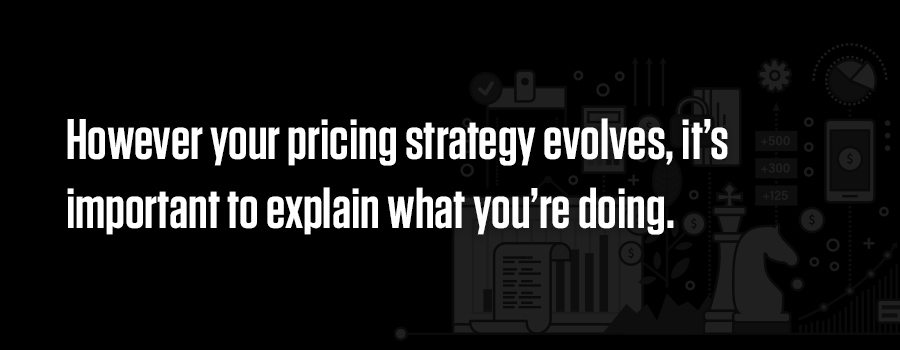
Pandemic Pricing: Are You A Giver Or A Gouger?
Crises bring out the best and worst in people, and the best and worst in companies. During this one, we’re seeing this all the more because of social media and other types of Internet marketing.
- We see company after company donating supplies or selling them at below-market prices, and shifting manufacturing to critically needed products, which they sell at below-market pricing. These are great stories.
- We also hear people complain bitterly about companies charging what they deem to be excessively high prices, accusing these companies of taking advantage of the crisis to fatten their profits. These stories are fewer and farther between, thankfully.
So, if you are fortunate enough to be in business, what do you do about pricing? Do you adjust prices upward to the market? Do you reduce prices and risk spilling red ink on top of what you’re already wading in? Here are some thoughts that may help you answer these difficult questions.

- People have long memories about how companies conduct themselves in a crisis. How much are short-term profits worth if you have to spend the next five years rehabilitating your corporate reputation and slashing prices to regain customers who were itching to leave you?
- There’s an old adage that pigs get fat and hogs get slaughtered. While the point above illustrates how this applies to price gouging, it also applies to excessive underpricing. If your corporate generosity, however well intended, causes your business to collapse and your employees to be thrown out of work, are you hurting conditions more than helping them?
- Selling at market prices, even if unusually high as they sometimes are in a crisis, is not a bad thing. Selling too low creates shortages in a hurry, and then people who need the product can’t buy it at any price. Companies experience customer resistance whenever they raise prices, and doing so in a crisis just inflames the response. Nevertheless, you have to weigh whether you’d rather incur the wrath of a customer complaining about the price, or the wrath of a customer who can’t get material and is then forced to shut down production.
- Many companies have found an excellent middle path, keeping prices more or less in line with market conditions, and rationing sales in one way or another to discourage or prevent hoarding — and to avoid running out of product by taking on too many new customers.
However your pricing strategy evolves, it’s important to explain what you’re doing. Customers may not want to hear it, but there’s no doubt they’d rather hear bad news than no news. Without helping customers understand the situation with regard to pricing and availability, you make it difficult for them to make prudent decisions about critical business issues.
Work out the message with your sales and marketing teams. Use all possible means at your disposal to communicate — phone, web conference, email, social media, the company website, etc. Time stamp your communication. Be consistent in what you say. Make sure your actions with regard to pricing are consistent with what you say.
Do all that and you’ll maintain credibility, retain more customers and get the positive word-of-mouth branding effect for which you’re looking.




